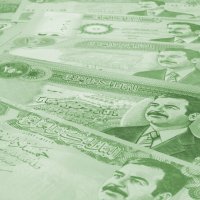Iraq sinks further into tangled web of foreign debts
Iraq’s national and foreign debts will most likely to have exceeded $125bn before the end of this year, despite its steady growth in oil revenues.

Before the Iraq-Iran war, Iraq was almost free of foreign loans, besides a number of loans, extended by the former Soviet Union, which were reimbursed for in oil. The war changed Iraq from a creditor to a debtor state: Iraq pursued a policy of increased military budgets, while maintaining social security spending and fostering economic development – that and the sudden drop in oil exports, together with the closure of the Syrian oil pipeline led to a depletion of its foreign reserves. Consequently, Iraq turned towards the Gulf Council Cooperation (GCC), to sovereign international creditors, and to private international banks, leading to an accumulation of foreign debts until 2003. Whereas these debts have been restructured and written off, Iraq’s 2014 civil war and fight against ISIS, together with the subsequent sanctions regime, resulted in a new set of war reparations and debt accumulation.
The 2016 signing of the IMF Stand-By Agreement (SBA), requiring more foreign loans for reconstruction, reignited the national debate that debts were crippling the country and holding Iraq hostage to foreign powers.
The status and composition of external debt at the end of 2018 consists of four blocks.
The first is $41bn to non-Paris Club, mostly to the GCC. These outstanding loans have been frozen, without any interest accumulation, nor are creditors demanding repayments. The IMF assumes that these would be cut by 90% - or be eliminated entirely depending on the nature of the future relationship between Iraq and the Gulf region.
The second is $6bn of restructured ($40bn in 2003) Paris Club debt, carrying an interest rate of 3% and payable over a period of 28 years.
The third is $4.7bn in Euro bonds, which are Iraq’s only external debt at commercial terms. These are divided into three bonds: a $2.7bn issued in 2006, due in 2028 with a 5.8% interest rate, a $1bn bond issued in 2017, due in 2022 with a 2.1% interest rate and a $1.0bn issued in 2017, due in 2023 with a 6.5% interest rate.
The fourth is $22bn in borrowings incurred after 2014, primarily from the IMF, the World Bank, and bilateral creditors. Most of these provided in the form of aid and at generous rates and repayment terms.
Meanwhile, some sovereign creditors are demanding repayments: Iran agreed to set up a bilateral payment mechanism to facilitate Iraq’s debts over gas and electricity payments, and France cancelled Iraq’s debt through the Paris Club supporting deeper cooperation in the fields of economy, energy, and services.
Presently, Iraq can capitalise on higher oil prices and expanding oil production to reposition its debt profile. If not, ultimately this pattern of debt accumulation will place Iraq’s strategic oil reserves under the mortgage of banks and creditor countries.
